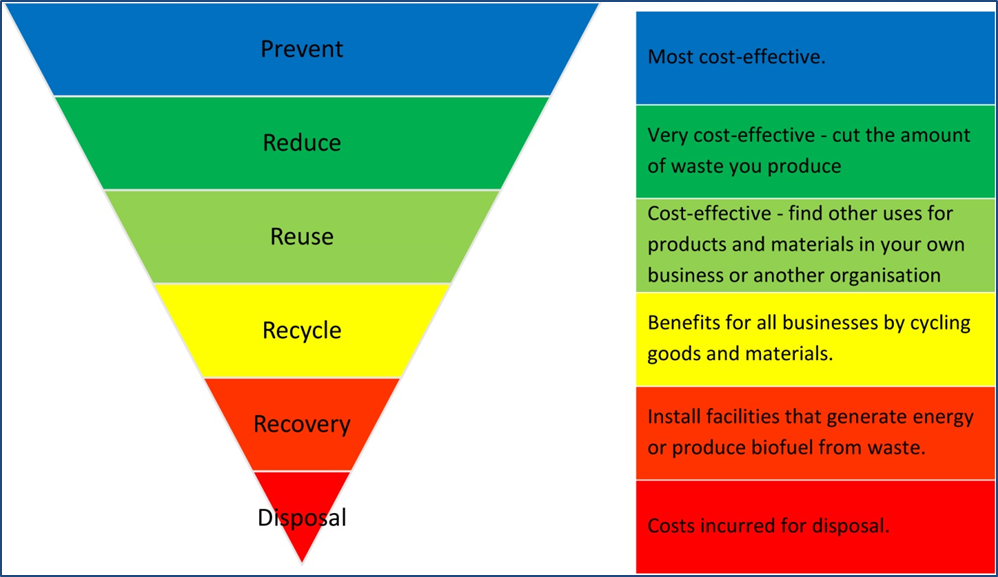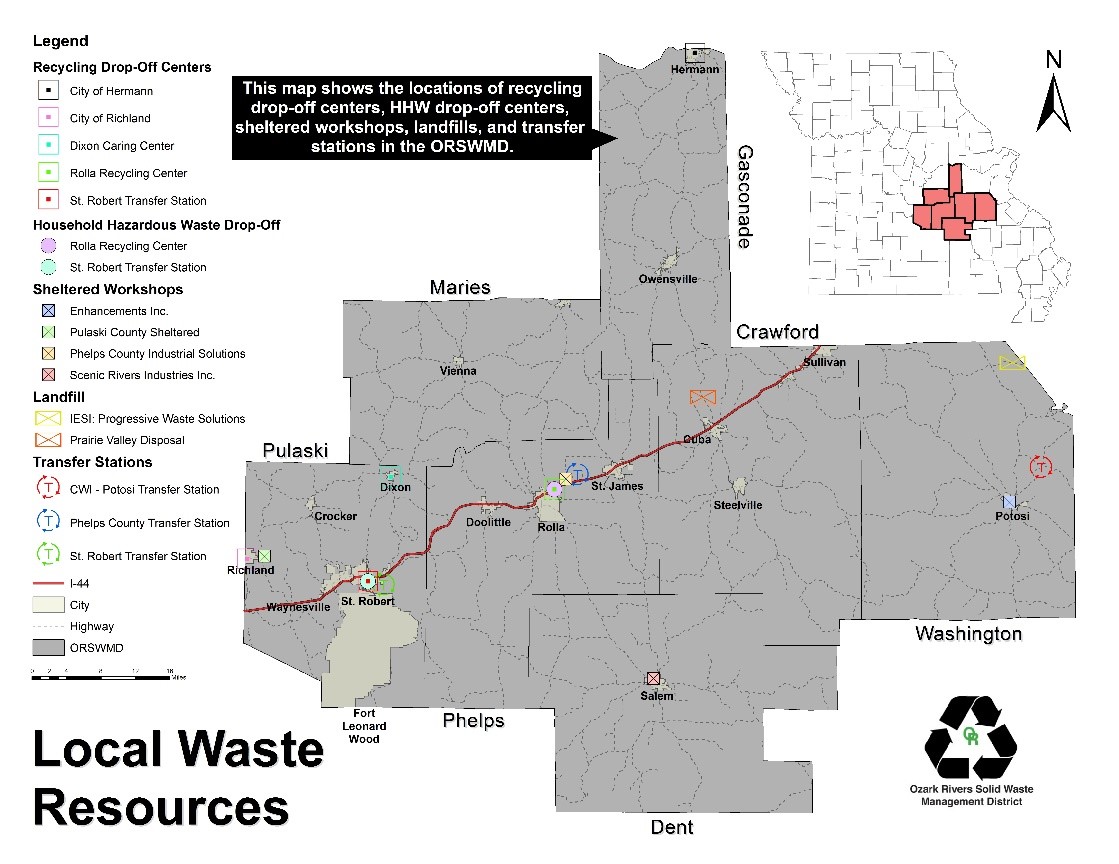History of Solid Waste Management in the Ozark Rivers Region
Prior to 1970, local government officials and individual citizens were largely responsible for solid waste management. The predominant method of managing solid waste was disposal at the local dump. Town dumps were generally opened on undesirable land — wetlands, abandoned strip mines or badly eroded areas — without consideration to geology, water quality or public health.
A survey conducted by the Missouri Division of Health between 1968 and 1970 concluded that 97 percent of the authorized landfills in the state contributed to land, air and water pollution, and only 4 of 457 sites could be described as sanitary. Poor planning and operation of town dumps was resulting in serious threats to the environment and to public health. In response to these troubling statistics, the Missouri Solid Waste Management Law was enacted in 1972. At approximately the same time, Operation 5000 was enacted by the U. S. Environmental Protection Agency. This federal program closed over 5,000 dumps nationwide between 1970 and 1975. By 1975, most of the open dumps had been closed, stricter permitting regulations came into effect, and a more progressive approach to solid waste management began to evolve.
In 1986, Senate Bill 475 was passed, which significantly amended the Solid Waste Management Law of 1972 by placing more emphasis on resource recovery and enacting stronger regulations for landfill disposal to protect the environment and the public.
all of the remaining landfills and transfer stations that are currently operating within the region.
In the years since the plan was written, ideas about the waste hierarchy have evolved and been refined. Waste prevention, sometimes referred to as “refuse” has been added to the top of the hierarchy, and the former second tier has been split to separate “reuse” and “recycle”. These changes have helped to better define and refine our ideas about the best methods for reducing the amount of waste that we are sending to landfills.
Currently, the Missouri Department of Natural Resources (MDNR) states that statewide the 40 percent reduction has been achieved. However, the 40 percent reduction has not been achieved in the Ozark Rivers region and the district continues to work towards that goal. Programs in the region for the collection of appliances, electronics, tires and household hazardous waste support the 40% reduction goal. A map of the current locations for waste disposal in the region are shown below.


